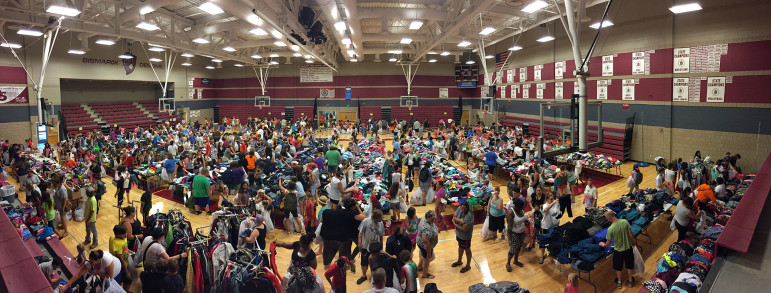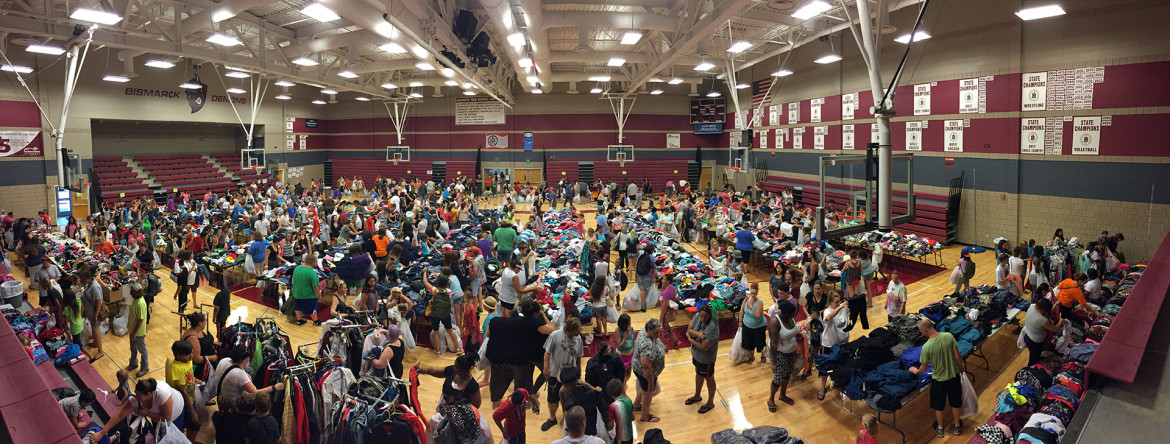
Photos courtesy of YouthWorks
YouthWorks' "We’ve Got You Covered" clothing giveaway served more than 600 youth and their families with free back-to-school clothing event.
WASHINGTON — A new grant program from the U.S. Administration for Children and Families is trying to untangle how to develop services for domestic victims of human trafficking. The most recent round of grants focuses on rural areas, where runaway and homeless youth, Native Americans and survivors of violence and abuse are among the high-risk populations for trafficking.
Young people can be a target for traffickers because they have run away or are homeless, or because they become homeless after being trafficked, said Katherine Chon, director of the Office on Trafficking in Persons at the ACF.
“We know human trafficking is a problem across the country — in rural, suburban and urban settings,” Chon said.
In North Dakota, providers say they’ve seen an increase in trafficking connected to oil boom towns, places where the social services safety net is not usually in place.
As part of the grant program, one group, Mountain Plain Youth Services/Youthworks will look specifically at how to help youth ages 13 to 21 who are at risk for trafficking, have been recovered from trafficking or identify as being trafficked.
The group plans to develop a network of host homes, places where young people can find shelter and assistance.
Melanie Heitkamp, YouthWorks executive director, said collaboration will be key to the program’s success, from social services agencies, law enforcement, domestic violence groups and the larger community.
“We don’t try to tackle this problem alone. We’re developing protocols and multidisciplinary teams so we can maximize our resources,” she said.
The National Human Trafficking Resource Center received calls about nearly 1,000 cases of human trafficking from 15 of the most rural states from late 2007 to June 2014, according to ACF. Of those, 74 percent referenced sex trafficking, and 26 percent referenced labor trafficking.
[Related: Chicago: A National Hub for Human Trafficking]
The grant program is not the only way ACF is working in the Bakken oil fields of North Dakota and Montana to address human trafficking. In 2014, the agency started training health care providers on how to recognize and deal with human trafficking in several communities.
Chon said the new grant program focuses on domestic victims because of an evolving awareness that trafficking does not affect only foreign nationals.
“It was much more diverse than we first understood,” she said.
In previous guidance, the agency has identified screening tools that can help community organizations and others identify victims of trafficking. They recommend paying attention to both the mental and physical health of children and adolescents.
More related articles:
Humans Not For Sale: Federal and State Trafficking Legislation
